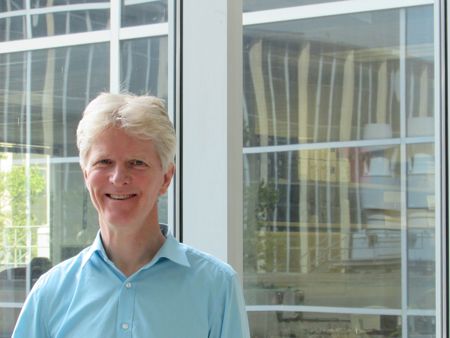Michael Bachmann
Associate Professor, Department of Microbiology, Genetics, & Immunology
Associate Professor, BioMolecular Science Gateway
Location: 775 Woodlot Dr Room 1318
Phone: 517-884-7467
Email: mhb@msu.edu

Bio
As a trained molecular virologist and cancer biologist my goal has been to advance our understanding of the molecular pathogenesis of HIV/AIDS, cancer, transplantation immunology, and lately, COVID. I studied medicine in Frankfurt/Main and Mainz, Germany, and spent my final year at the Royal Postgraduate School, Hammersmith Hospital in London, U.K. In my graduate studies in the laboratory of Dr. James I. Mullins in the Dept. of Cancer Biology at the Harvard School of Public Health I focused on the molecular epidemiology of human and feline immunodeficiency viruses. Working first as a postdoctoral fellow and then as a research scientist in the laboratory of Dr. Christopher Contag at Stanford University, I advanced bioluminescence imaging (BLI) methodology and applied it to a number of animal models of human disease, including cancer and infection. Over the last decade, I have been combining BLI with molecular genetic screens to study how the immune system interacts with cancer cells and immunologically mismatched transplants and how it could possibly be modulated for the benefit of patients. Since the advent of the COVID-19 pandemic, my lab has focussed primarily on seeking to understand its molecular pathogenesis, in particular the COVID-19 associated coagulopathy (clotting disorder, CAC). Our goal is to apply this knowledge and develop therapeutics for CAC and improved vaccines. ###Education M.D., 1985, Johannes Gutenberg University, Mainz, Germany Sc.D., 1996, Harvard University, Boston, MA Postdoctoral Fellow, 1995-96, Dept. of Psychiatry & Psychosocial Medicine, Stanford University, Stanford, CA Postdoctoral Fellow, 1996-2002, Dept. of Pediatrics, Stanford University, Stanford, CA Research Scientist, 2002-2017, Dept. of Pediatrics, Stanford University, Stanford, CA ###Research My lab currently addresses two major medical and public health challenges: understanding the pathogenesis of COVID-19 and of cancer. We are therefore pursuing the following questions: 1. The clotting disorder associated with acute and long COVID has been causing substantial numbers of excess deaths since the beginning of the pandemic in 2020 to this day. The prevailing opinion in the field attributes it to excessive inflammation in high risk patients. Our core hypothesis is that one or more of the SARS-CoV-2 proteins are direct drivers of the clotting disorder. We are using molecular biology, protein biochemistry, computational modeling, and in vivo studies in mice to understand viral-host protein-protein interactions that may underly the clotting disorder. Based on our results we will develop diagnostics and therapeutics that can prevent or block this detrimental process and its adverse effects, thereby improving the lives and prognosis of COVID patients. 2. Cancer Immune Escape: How do cancer cells escape from surveillance by the immune system that normally removes such altered cells? So far, a number of genes, signaling molecules and pathways have been implicated, yet, it remains unclear what constitutes a sufficient minimal set to achieve this capability in cancer cells. Once we know this set of "immune escape genes" and better understand the immune escape mechanisms more effective immunotherapies – which have been revolutionizing cancer treatment – can be designed so that immunotherapies are no longer fraught with dangers, such as severe autoimmunity, and in some cases unfortunately, faster disease progression. To identify immune escape genes we are testing candidate genes in mouse models of disease for their causal role. In a reverse genetics approach we are using transposon-mediated gene transfer to insert genes of interest in vitro into cancer cells that exhibit all hallmarks of cancer except the ability to escape the immune system (i.e., they make tumors in immunodeficient mice). The gene-modified cells are subsequently introduced into immunologically compatible (MHC-matched) mice where we then monitor the cells’ survival in real time using bioluminescence imaging (BLI). Cells with prolonged survival can be recovered and analyzed for overexpressed or knocked out genes. Finally, we are also analyzing RNA sequence data of mouse tumors and publicly available human cancer genomics databases to confirm the significance of the identified genes as contributors to disease progression.